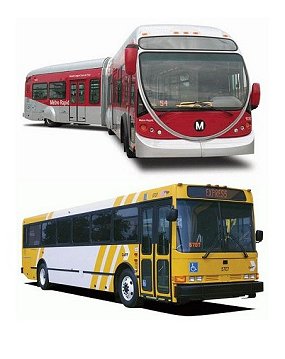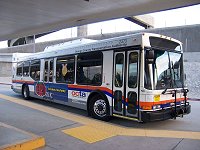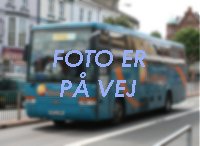Busser > Busproducenter
|
Bustypeoversigt: |
|
North American Bus Industries Inc. (USA) |
|
|
Nationalitet: Koncern: First Hungarian Found Firmaet grundlagt: 1992 Produktion 1999: 510 busser Internetadresse: www.nabiusa.com Firmaets postadresse: North American Bus Industries Inc. - NABI (NABI Rt), 106 National Drive, 36207 Anniston - AL, USA, tlf. +1 256 - 831 4296 |
|
|
|
|
NABI's method of production, dating back to the Ikarus USA/American Ikarus period, is split between plants in Hungary and Anniston in what is an outgrowth of "Buy America" requirements, which mandate buses purchased with government money have at least 60% of the bus built in the US. The shells for the buses are built in Hungary and are then shipped to Anniston for the installation of all other components. This method has had its advantages in lower costs of labor in Hungary vs. the US and Canada, however at times it has had its disadvantages (as can be seen in the section on the Compobus). The advantages of lower costs of shell assembly have been the main reason NABI has maintained the practice even after the 416/436 began to fall from favor and the LFW series became NABI's main product. However, the cost advantage eroded, due to an unfavorable foreign exchange ratio between the Hungarian forint and the U.S. dollar. The problems, leading to the sale of the company's assets, are described in the 2005 Annual Report. In 2001, NABI launched a new line called the Compobus, a revolutionary line which used a body built from composite fiberglass as opposed to the traditional steel. This model was also notable for being the first transit bus in North America to be available in a 45-foot length (model 45C-LFW) in addition to the standard 40-foot (model 40C-LFW). Though, on paper, the Compobus looked to be an eventual success and a standard setter for transit buses, the model instead floundered and failed for a multitude of reasons including a lack of customers, financial losses stemming from shell production, the expiration of Buy America Act waivers, and an uneasiness from transit authorities to buy a non-steel bus. These factors led to the discontinuing of the Compobus line in early-2005. (kilde: Wikipedia)
|
||||||||||||||||||||||||||||||
|
|
|---|



 North American Bus Industries, commonly known as NABI, is a major transit bus manufacturing company based in Anniston, Alabama. NABI was founded in 1992 when the Hungarian firm Ikarus Bus, a key bus supplier to Eastern Europe, spun off a majority share of their American operations to American/Hungarian investors amid financial instabilities in the wake of the end of the Cold
War.
North American Bus Industries, commonly known as NABI, is a major transit bus manufacturing company based in Anniston, Alabama. NABI was founded in 1992 when the Hungarian firm Ikarus Bus, a key bus supplier to Eastern Europe, spun off a majority share of their American operations to American/Hungarian investors amid financial instabilities in the wake of the end of the Cold
War.

